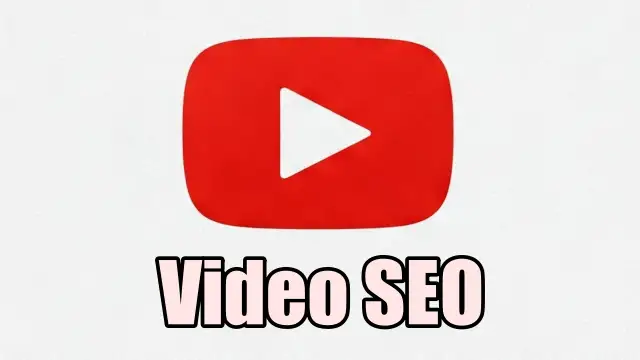Table of Contents
Blogging vs. Vlogging in 2025: Where’s the Real Money At?
So, you are thinking about diving into the world of content creation? Awesome! The digital world offer countless ways to share your passions, build a community, and maybe, just maybe, make some decent money while you’re at it. The allure of the “creator economy” is strong, especially here and globally, with stories of people turning hobbies into full-blown careers. But then comes the big question: which path do you take? Do you pour your heart out into the written word with blogging, or do you step in front of the camera and embrace vlogging?
More importantly, perhaps, which one is better for the bottom line? If making money is a key goal (and lets be honest, for many it is!), does blogging or vlogging hold the golden ticket in 2025? Does one consistently outperform the other in the earnings department?
Spoiler alert: the answer isn’t as simple as crowning one king or queen. Both blogging and vlogging offer unique opportunities and challenges when it comes to monetization. Let’s break down the differences, explore how creators actually make money on each platform, and help you figure out which might be the better fit for your financial goals.
What’s the Difference, Really? Blog vs. Vlog 101
Before we get into the money talk, let’s quickly define our terms:
- Blogging: At its core, blogging involves creating and publishing written content on a website (the blog). This can include articles, guides, reviews, personal essays, news updates, and more, often supplemented with images or graphics. Think websites like lifestyle blogs, tech review sites, recipe collections, or personal finance guides. A blog are essentially a content website you control.
- Vlogging: This stands for “video blogging.” It involves creating and publishing video content. While vloggers can host videos on their own websites, most primarily use video-sharing platforms like YouTube, Instagram (Reels/Stories), TikTok, or Facebook. Content ranges from “day in the life” videos and tutorials to travel diaries, product reviews, commentary, and entertainment.
The fundamental difference? Text vs. Video. This core distinction impacts everything from creation skills to audience engagement and, crucially, how you make money.
The Money Game: How Bloggers & Vloggers Actually Earn Their Keep

Okay, let’s follow the money. How do creators on both sides actually generate income? The methods are often similar, but their effectiveness and implementation can differ:
- Advertising Revenue:
- Blogging: Typically uses display ad networks like Google AdSense or premium networks (Mediavine, AdThrive “CafeMedia and AdThrive are now Raptive“). Income depends heavily on website traffic (page views) and ad click-through rates (CTR). High traffic = more potential ad revenue.
- Vlogging: Primarily through platform-specific ad programs, like YouTube AdSense. Revenue depends on video views, watch time, audience demographics, and the types of ads shown (pre-roll, mid-roll). High engagement and watch time are key.
- The Verdict? Both can be lucrative, but the metrics differ. High-traffic blogs can earn well, as can YouTube channels with high watch time, even if view counts aren’t astronomical. It’s comparing apples and oranges to some extent.
- Affiliate Marketing:
- Blogging: Promoting products/services and earning a commission via unique affiliate links within articles, reviews, or resource pages. Excellent for in-depth reviews and comparison posts where readers are actively researching.
- Vlogging: Recommending products/services in videos, often with demonstrations or tutorials, and placing affiliate links in the video description or pinned comments. Visual demos can be very persuasive.
- The Verdict? Affiliate marketing work well for both. Blogs excel at SEO-driven, research-based affiliate content. Vlogs excel at visual demonstration and building trust through personality.
- Sponsored Content / Brand Deals:
- Blogging: Companies pay for sponsored articles, reviews, or mentions on the blog. Rates depend on traffic, niche authority, and audience demographics.
- Vlogging: Brands pay for dedicated sponsored videos, product placements, mentions, or integrations. Visual platforms like YouTube and Instagram are hugely popular for influencer marketing. Rates depend on views, engagement, niche, and creator influence. The influencer market, for instance, is booming.
- The Verdict? High earning potential on both sides. Vlogging might have a slight edge for visually demonstrating products, but authoritative blogs command premium rates too. Negotiation skills matter!
- Selling Own Products / Services:
- Blogging: Selling e-books, online courses, printables, coaching services, consulting, or physical products. Blogs provide ample space for detailed sales pages and written persuasion.
- Vlogging: Selling merchandise (T-shirts, mugs), digital products, courses, or coaching. Vlogs build strong personal connections that can drive sales, especially for personality-driven products.
- The Verdict? Both are effective launchpads. Blogs might be better suited for selling high-ticket info products requiring detailed explanations; vlogs excel at building brand personality for merch or coaching.
- Memberships / Donations:
- Blogging: Using platforms like Patreon, Buy Me a Coffee, or website membership plugins to offer exclusive content or community access for paying supporters.
- Vlogging: Utilizing YouTube Channel Memberships, Patreon, or similar platforms for exclusive videos, early access, badges, or community perks.
- The Verdict? Success depends heavily on building a loyal, engaged community willing to pay for extra value, regardless of the medium.
Skills, Sweat & Gear: What Does It Actually Take to Create?
Making money sounds great, but what about the work involved?
- Blogging:
- Skills: Strong writing and editing abilities are paramount. Good research skills. Understanding SEO (Search Engine Optimization) is crucial for traffic. Basic website management (like WordPress) is helpful.
- Effort: Writing well takes time and focus. Consistent publishing is key. SEO takes ongoing learning and implementation.
- Costs: Relatively low startup. Domain name (~$10-15/year), web hosting (~$5-20+/month). You just need a computer.
- Vlogging:
- Skills: On-camera presence (or excellent voiceover skills), storytelling ability, video shooting techniques, video editing (can be time-consuming!), understanding platform algorithms (e.g., YouTube SEO).
- Effort: Filming can be quick or elaborate. Editing often takes much longer than filming. Consistency is vital on platforms like YouTube.
- Costs: Can start with a smartphone, but often scales up. Decent camera, microphone, lighting, and video editing software represent a potentially significant investment. Vlogging often require more upfront investment in gear and software.
Getting Seen: Discoverability, SEO & Audience Building

How do people find your stuff?
- Blogging: Primarily relies on search engines (Google, Bing). Strong SEO helps articles rank for relevant keywords, potentially driving traffic for months or years (evergreen content). Social media (especially Pinterest for some niches) and email lists are also key drivers. Blog posts has the potential for long-term passive traffic if SEO is done well.
- Vlogging: Heavily dependent on platform algorithms (YouTube, TikTok, Instagram) recommending your content. Youtube is important (video SEO), but suggested videos often drive more views. Personality and visual appeal play a huge role. Potential for rapid viral growth, but visibility can also plummet with algorithm changes.
Pros and Cons: The Quick Rundown for Monetization
Let’s summarise the financial advantages and disadvantages:
Blogging:
- Pros: Lower startup costs, you fully owns your blog platform (less reliance on external algorithms), great potential for evergreen content generating passive income via SEO/affiliate links, strong for detailed product reviews/comparisons.
- Cons: Can take longer to build substantial traffic, requires strong writing/SEO skills, ad revenue highly dependent on page views, maybe less personal connection for some niches.
Vlogging:
- Pros: High potential for audience engagement/connection, visual medium excellent for product demos/tutorials/personality, potentially faster growth via viral content, lucrative YouTube ad revenue and brand deals possible for popular channels.
- Cons: Higher potential startup costs (gear/software), heavy reliance on platform algorithms (YouTube can change rules!), video editing is time-consuming/skill-intensive, being “on camera” isn’t for everyone, content can sometimes feel less evergreen. Being dependent on one platform carry risks.
The Crunch: Which One is “Better” Depends On…
So, after all that, which path leads to more money? The frustrating but honest answer is: it depends. There’s no single winner. The “better” choice hinges on several factors:
- Your Niche: Are you explaining complex financial strategies? Blogging might be better. Are you teaching makeup tutorials or showcasing travel destinations? Vlogging’s visual nature is a huge advantage. Certain niches lends themselves better to text or video.
- Your Skills & Personality: Are you a naturally gifted writer who prefers working behind the scenes? Or are you comfortable on camera, with a knack for visual storytelling and editing? Play to your strengths!
- Your Resources: Do you have the budget for camera gear and editing software? Or are you starting with minimal funds?
- Your Time Horizon & Goals: Are you looking for potentially faster (but maybe less stable) growth, or are you building a long-term content asset?
Why Not Both? The Power of the Hybrid Approach
Increasingly, successful creators don’t choose either/or. They embrace a hybrid model:
- Running a blog with embedded videos to explain concepts visually.
- Having a YouTube channel that summarizes blog posts or offers behind-the-scenes content.
- Using video snippets on social media to drive traffic back to a blog post.
Many creators finds success by leveraging the strengths of both mediums to reach a wider audience and create multiple income streams. This often represents the sweet spot in 2025.
The Final Verdict: It’s About Value & Consistency
Ultimately, the best platform are the one you can consistently create high-quality, valuable content for, connect with an audience on, and learn to monetize effectively. Both blogging and vlogging offer significant income potential for those willing to put in the work.
Don’t get too hung up on which platform is supposedly “better” in the abstract. Success take time, dedication, understanding your audience, adapting to changes, and providing genuine value. Whether you choose the keyboard or the camera (or both!), focus on creating something awesome, serving your audience well, and learning the monetization strategies that fit your content and style. The money often follows the value.
So, what are you waiting for? Pick your platform (or platforms!), start creating, and begin your journey!

